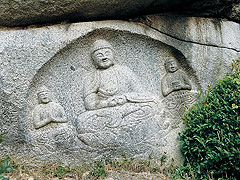
The gently-blaring Amitabha three-son statue carved into a rock that slightly tilts to the left; the Guanyin, the seisu bodhisattva, is carved on both sides of the Amida Buddha, which is about 80cm high; and the "Nemuri Buddha" is also found on the side; 7 years (1299) by Imiyagi.
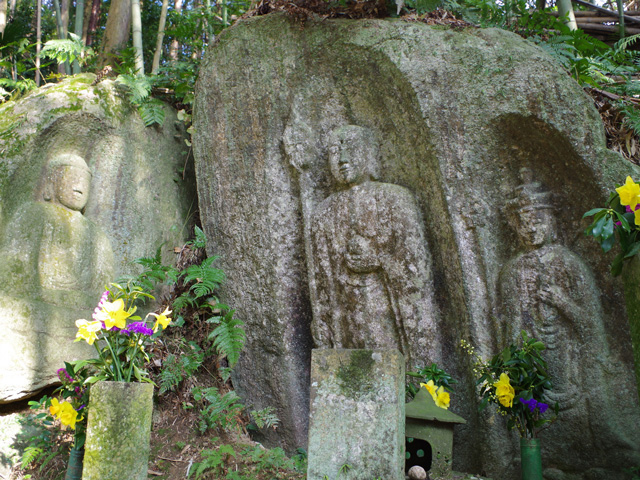
An unusual arrangement of Jizō Bodhisattva in the center, Amitabha Buddha in the left, and Juichen Guanyin on the right. On the forehead of Jizō Bodhisattva, the remains of the Jizō Bodhisattva, which is the oldest stone Buddha of the Touo.
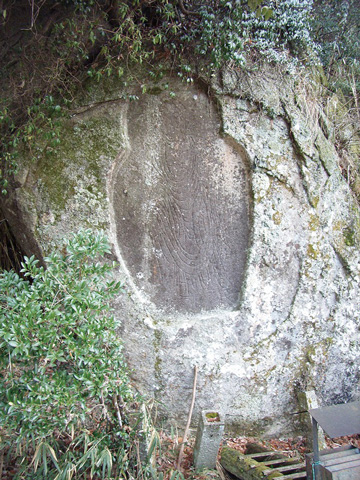
It is inscribed on a rock in the tsuji of the ancient road leading to Kasagi, and is said to be a imitation of the Maitreya Cliff Buddha of Kasagi-ji Honson. If you look closely, you can see a figure with your body tilted to the left. It is a work by Ise Yumi Bunei 11 (1274), who carved the Buddha.
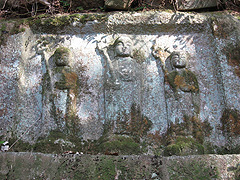
The three-body Jizobodhisattva with a scuttlestick has the meaning of offering the spirits of the Sankai; the middle Buddha is only slightly larger.
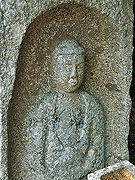
It stands at the site of Shakya Temple. Amida, which is called Jizo but connects the seal seal, and is the oldest stone Buddha in this area. It was written by Honjō 2 (1262). It is called this because it is not that the neck is cut, but because the constriction of the neck seems to be deep and cut, and it is said that it was once placed in the execution hall north of this country.
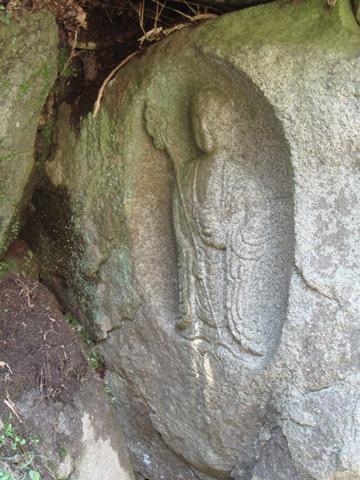
A statue of Amitabha Buddha is carved on one rock, and a statue of Jizovalu with a change of face. The wire-carved lanterns are provided with a fire bag. It is called "crow's jar" because it is located at the fork of the "crow's pot" road and the foundation stone in which the hole was dug is similar to Karasu.
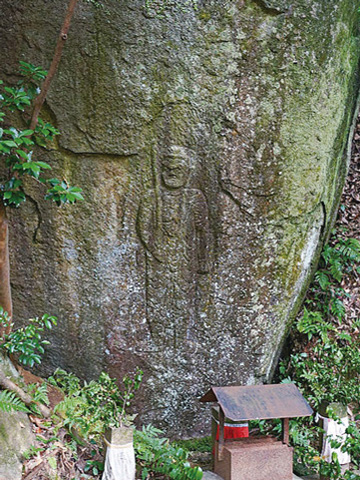
Mr. immovable, about 1.2m high. The expression that makes you feel familiar somewhere in the rigors is impressive. It is said that if you ask only one wish, it will come true. Written years (1287).
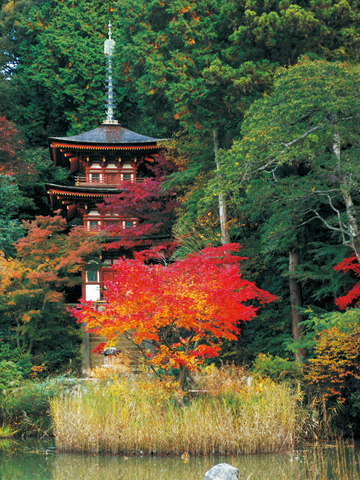
According to Teraden, the temple was founded by Nishi-Odawara-ji [Nishi-Odawara-dera] in the year of Eisheng 2 (1047). It is said to be a temple shaped by the Pure Land that the Heian nobility yearned for, and the main hall (national treasure) and the three-piece pagoda (national treasure) face each other in the Pure Land-style garden (historical site, special Meishatsu). Nine statues of the Fujiwara period wooden Amitabha Nyorai (national treasures) are enshrined in the main hall erected in the Jia Seung 2 (1107), and the Shitenno Ritsu statue (national treasure) with a gentle expression is also enshrined. The Bewitching Secret Buddha Kichijoten statue (Important Cultural Property) from the Kamakura period will be opened in January and in spring and autumn.
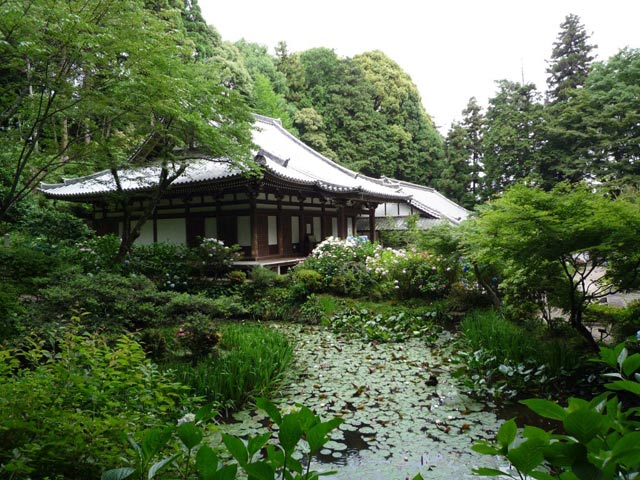
The ancient temple, which is said to have been founded by Gyoki, in the Imperial Court of Emperor Shōmu. During the Heian period, the gaiji were maintained, but they were burned by the early Kamakura soldiers. The Mie Pagoda (Important Cultural Property), which enters the precinct and stands in front and is wrapped in greenery, was erected in 1442, and was restored in 2003. The main statue of Amitabha Nyorai (Important Cultural Property) is a jokuroku colossus with large screeching hair, and was built in Tenkei 9 (946). The statue was created by the Fujiwara era. Protected principal born in the year of Tina and the year of the year.
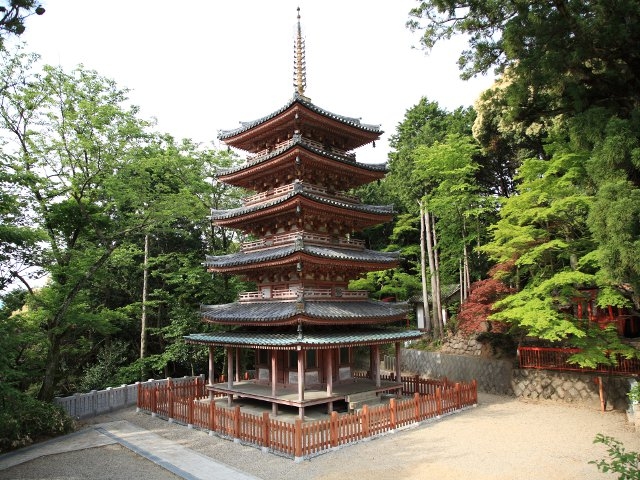
It is located on the middle of the Mikami mountain in the city of Kizugawa, located at the southern tip of Kyoto Prefecture, and is an ancient temple that was founded by the Ryoben Buddhist priest in the Imperial Court of Emperor Shōbu. The five-storied pagoda (national treasure) built in the Kamakura period is not so high at 18m in height, but the appearance of the first layer with a shōkoshi (mokoshi) is rare. The wooden statue of the main hall of the main hall (National Designated Important Cultural Property) is a one-piece wooden statue from the Jyōkan period and is a large-scale construction style. From the beginning of November to the beginning of December, the autumn leaves are also exceptional, and in the late October-early November "Kaisuzanji Cultural Property Special Public", there is a special view of the Goitō chancel and Hondo, as well as a public view of the Honbo Garden, you can enjoy the landscape of the garden colored with the autumn leaves.











